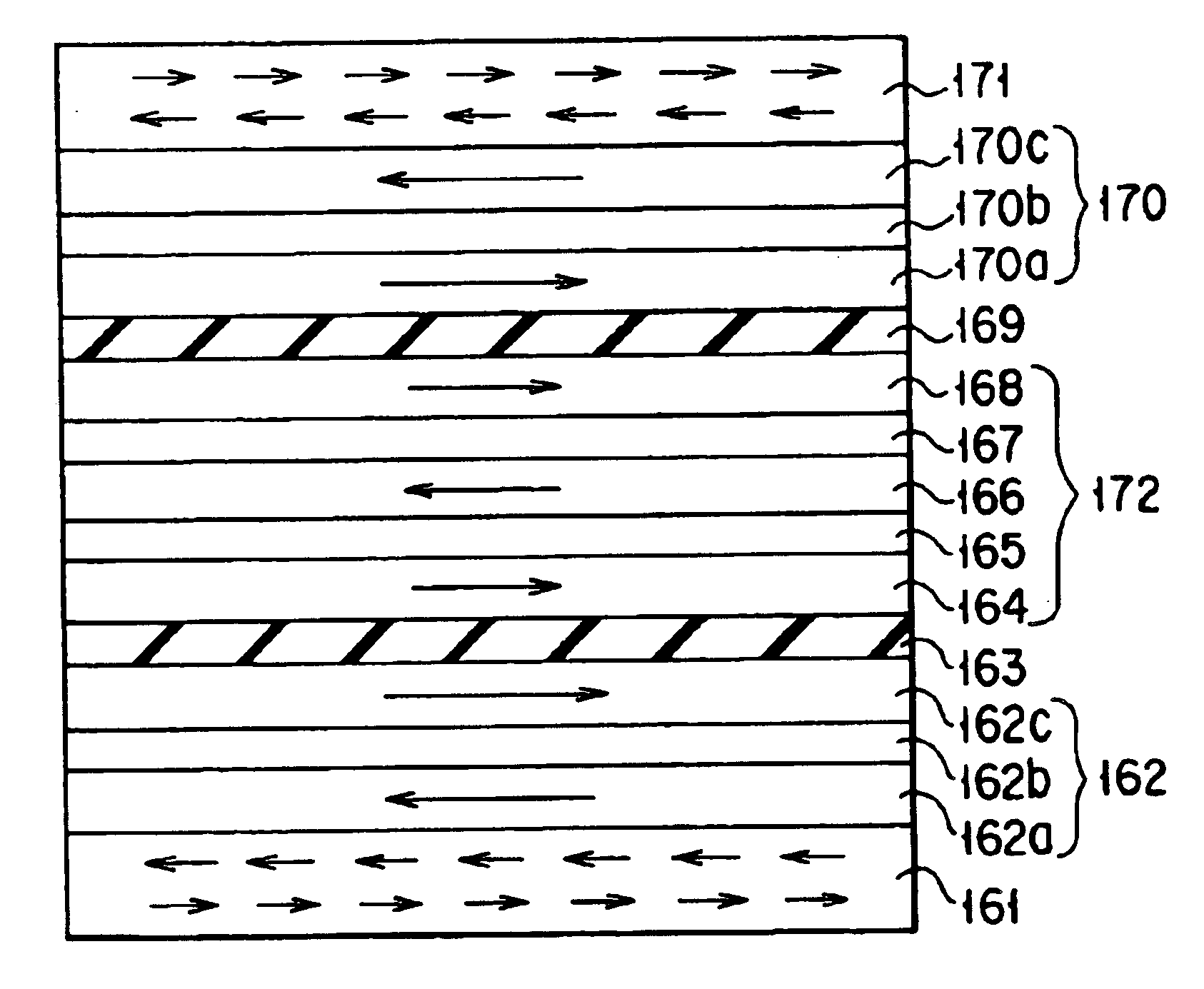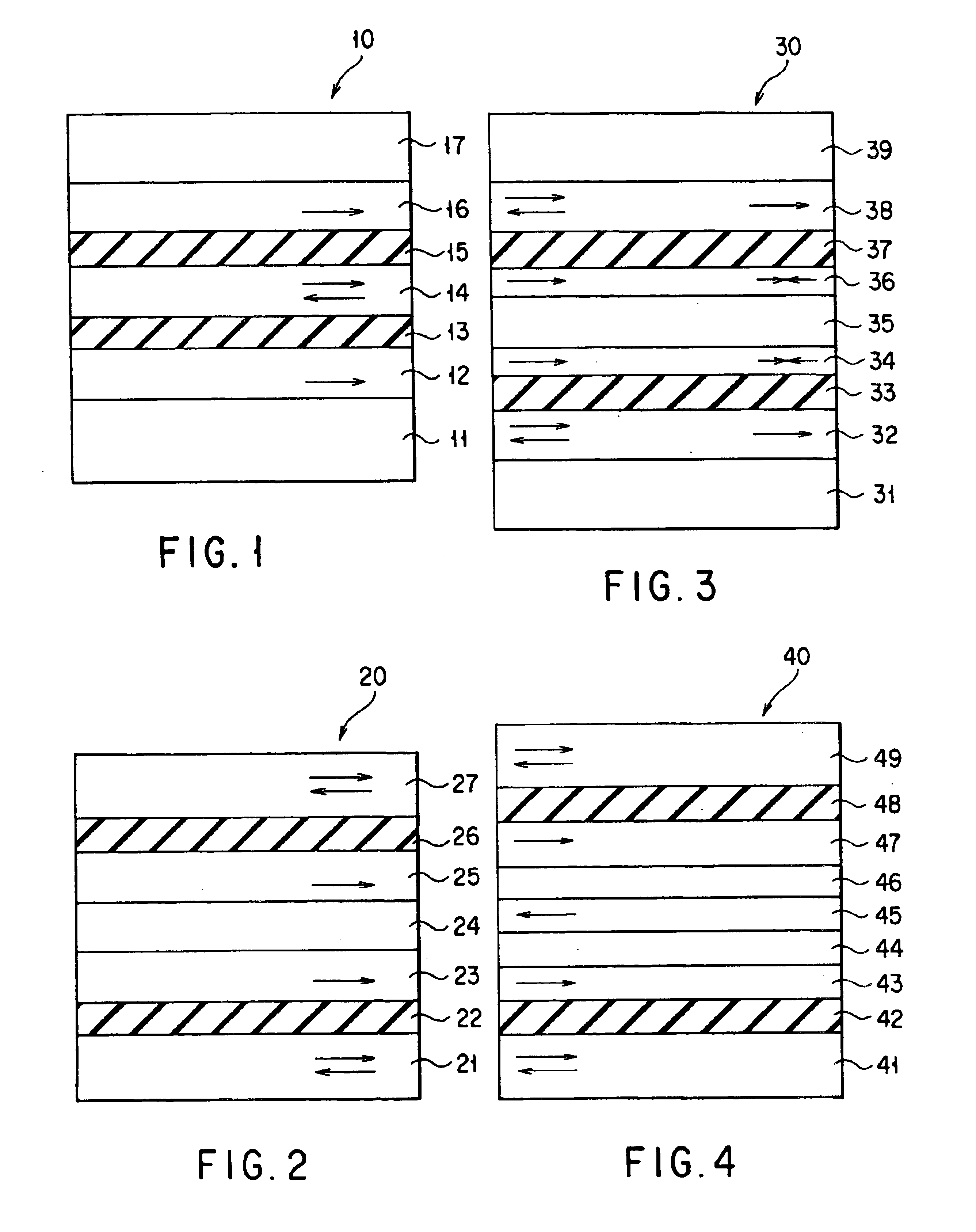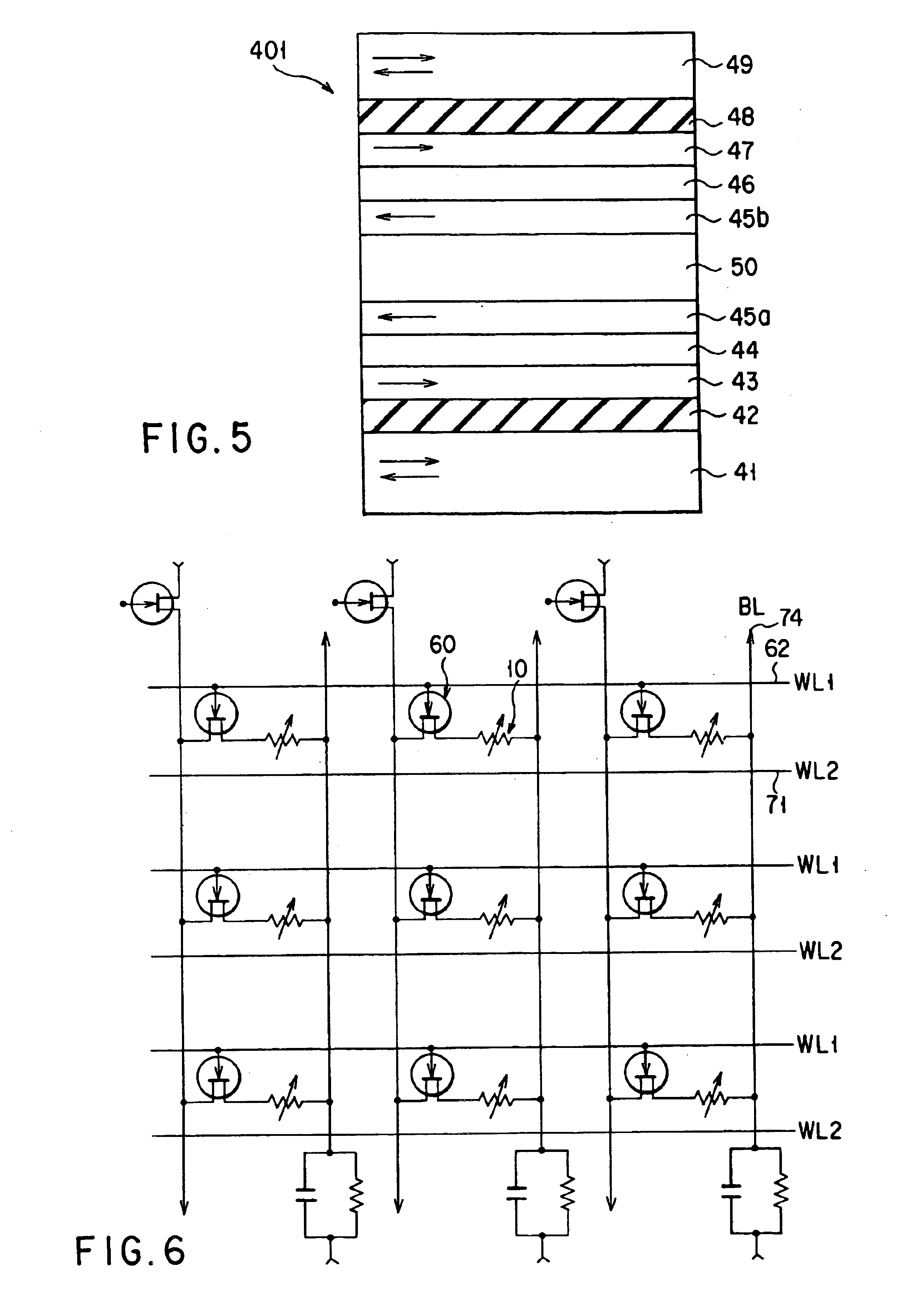Magnetoresistive element and magnetic memory device
a magnetic memory device and magnetoresistance technology, applied in the field of magnetoresistance elements and magnetic memory devices, can solve the problems of reducing mr change, reducing mr change, and gradually decreasing output, so as to reduce mr change
- Summary
- Abstract
- Description
- Claims
- Application Information
AI Technical Summary
Benefits of technology
Problems solved by technology
Method used
Image
Examples
embodiment 1
[0133]An embodiment, where two kinds of ferromagnetic double tunnel junction elements (sample A, and B) with the structure shown in FIG. 1 were formed on a Si / SiO2 substrate or SiO2 substrate, will be described below.
[0134]The sample A has a structure sequentially stacked with a TaN underlayer, a first antiferromagnetic layer of a two-layered film of Fe—Mn / Ni—Mn, a first ferromagnetic layer of CoFe, a first dielectric layer of Al2O3, a second ferromagnetic layer of Co9Fe, a second dielectric layer of Al2O3, a third ferromagnetic layer of CoFe, a second antiferromagnetic layer of a two-layered film of Ni—Fe / Fe—Mn, and a protective layer of Ta.
[0135]The sample B has a structure sequentially stacked with a TaN underlayer, a first antiferromagnetic layer of Ir—Mn, a first ferromagnetic layer of Co—Fe, a first dielectric layer of Al2O3, a second ferromagnetic layer of a three-layered film of CoFe / Ni—Fe / CoFe, a second dielectric layer of Al2O3, a third ferromagnetic layer of CoFe, a secon...
embodiment 2
[0150]An embodiment, where two kinds of ferromagnetic double tunnel junction elements (sample A2, and B2) with the structure shown in FIG. 2 were formed on a Si / SiO2 substrate or SiO2 substrate, will be described below.
[0151]The sample A2 has a structure sequentially stacked with a TaN underlayer, a first ferromagnetic layer of a two-layered film of Ni—Fe / CoFe, a first dielectric layer of Al2O3, a second ferromagnetic layer of CoFe, an antiferromagnetic layer of Ir—Mn, a third ferromagnetic layer of CoFe, a second dielectric layer of Al2O3, a fourth ferromagnetic layer of a two-layered film of CoFe / Ni—Fe, and a protective layer of Ta.
[0152]The sample B2 has a structure sequentially stacked with a TaN underlayer, a first ferromagnetic layer of a three-layered film of Ni—Fe / Ru / CoFe, a first dielectric layer of Al2O3, a second ferromagnetic layer of a two-layered film of CoFe / Ni—Fe, a first antiferromagnetic layer of Fe—Mn, a third ferromagnetic layer of a two-stacked film of Ni—Fe / CoF...
embodiment 3
[0167]An embodiment, where two kinds of ferromagnetic double tunnel junction elements (sample A3, and B3) with the structure shown in FIG. 3 were formed on a Si / SiO2 substrate or SiO2 substrate, will be described below.
[0168]The sample A3 has a structure sequentially stacked with a TaN underlayer, a first antiferromagnetic layer of Ir—Mn, a first ferromagnetic layer of Co—Fe, a first dielectric layer of Al2O3, a second ferromagnetic layer of Co—Fe—Ni, a second antiferromagnetic layer of Fe—Mn, a third ferromagnetic layer of Co—Fe—Ni, a second dielectric layer of Al2O3, a fourth ferromagnetic layer of Co—Fe, an third antiferromagnetic layer of Ir—Mn, and a protective layer of Ta.
[0169]The sample B3 has a structure sequentially stacked with a TaN underlayer, a first antiferromagnetic layer of Ir—Mn, a first ferromagnetic layer of a three-layered film of Co—Fe / Ru / Co—Fe, a first dielectric layer of Al2O3, a second ferromagnetic layer of a two-layered film of CoFe / Ni—Fe, a second antifer...
PUM
| Property | Measurement | Unit |
|---|---|---|
| thickness | aaaaa | aaaaa |
| thickness | aaaaa | aaaaa |
| thickness | aaaaa | aaaaa |
Abstract
Description
Claims
Application Information
 Login to View More
Login to View More - R&D
- Intellectual Property
- Life Sciences
- Materials
- Tech Scout
- Unparalleled Data Quality
- Higher Quality Content
- 60% Fewer Hallucinations
Browse by: Latest US Patents, China's latest patents, Technical Efficacy Thesaurus, Application Domain, Technology Topic, Popular Technical Reports.
© 2025 PatSnap. All rights reserved.Legal|Privacy policy|Modern Slavery Act Transparency Statement|Sitemap|About US| Contact US: help@patsnap.com



